
Gilbert Keith Chesterton was an English writer, philosopher, Christian apologist, and literary and art critic.

Trent's Last Case is a detective novel written by E. C. Bentley and first published in 1913. Its central character, the artist and amateur detective Philip Trent, reappeared subsequently in the novel Trent's Own Case (1936), and the short-story collection Trent Intervenes (1938).

Ronald Arbuthnott Knox was an English Catholic priest, theologian, author, and radio broadcaster. Educated at Eton and Balliol College, Oxford, where he earned a high reputation as a classicist, Knox was ordained as a priest of the Church of England in 1912. He was a fellow and chaplain of Trinity College, Oxford until he resigned from those positions following his conversion to Catholicism in 1917. Knox became a Catholic priest in 1918, continuing in that capacity his scholarly and literary work.

The Mystery of Edwin Drood is the final novel by the English author Charles Dickens, originally published in 1870.

Father Brown is a fictional Roman Catholic priest and amateur detective. He features in 53 short stories by English author G. K. Chesterton, published between 1910 and 1936. Father Brown solves mysteries and crimes using his intuition and keen understanding of human nature. Chesterton loosely based him on the Rt Rev. Msgr John O'Connor (1870–1952), a parish priest in Bradford, who was involved in Chesterton's conversion to Catholicism in 1922. Since 2013, the character has been portrayed by Mark Williams in the ongoing BBC Television Series Father Brown.
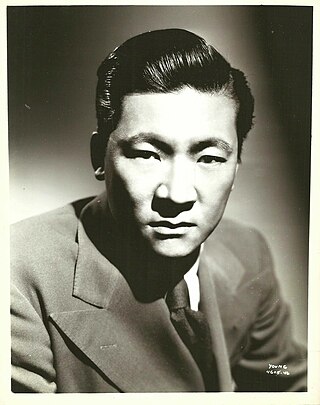
Victor Sen Young was an American character actor, best known for playing Jimmy Chan in the Charlie Chan films and Hop Sing in the western series Bonanza. He was born in San Francisco, California to Gum Yung Sen and his first wife, both immigrants from China.
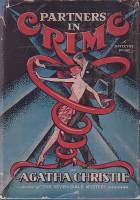
Partners in Crime is a short story collection by British writer Agatha Christie, first published by Dodd, Mead and Company in the US in 1929 and in the UK by William Collins, Sons on 16 September of the same year. The US edition retailed at $2.00 and the UK edition at seven shillings and sixpence (7/6). All of the stories in the collection had previously been published in magazines and feature her detectives Tommy and Tuppence Beresford, first introduced in The Secret Adversary (1922).

Father Dowling Mysteries, known as Father Dowling Investigates in the United Kingdom, is an American mystery television series first aired from January 20, 1989, to May 2, 1991. The series was preceded by the 1987 television movie Fatal Confession. NBC aired the first season, while ABC broadcast two additional seasons.
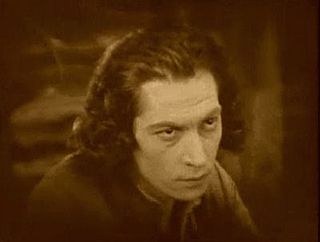
Francesco Giuseppe "Frank" Puglia was an Italian actor. He had small, but memorable roles in films including Casablanca, Now, Voyager and The Jungle Book.
Hercule Flambeau is a fictional character created by English novelist G. K. Chesterton, who appears in 48 short stories about the character Father Brown. A master criminal, his surname "Flambeau" is an alias, the French word for a flaming torch.

Father Brown is a 1954 British mystery comedy film directed by Robert Hamer and starring Alec Guinness as the title character with Joan Greenwood, Peter Finch and Cecil Parker. Like the American film Father Brown, Detective (1934), it is based loosely on The Blue Cross (1910), the first Father Brown short story by G. K. Chesterton. It was shot at the Riverside Studios in London. The film's sets were designed by the art director John Hawkesworth. It was distributed by Columbia Pictures in both Britain and the United States where it was released as The Detective. It was screened at the 1954 Venice Film Festival.

A Family Affair is a Nero Wolfe detective novel published by the Viking Press in 1975. It is the last Nero Wolfe book written by Rex Stout who died less than six months after the publication of the book.

Lee Tung Foo was a Chinese American Vaudeville performer born in California who performed in English, German, and Latin. He became a film actor later in his life.

Father Brown, Detective is a 1934 American mystery film directed by Edward Sedgwick and starring Walter Connolly, Paul Lukas and Gertrude Michael. It is based on the 1910 Father Brown story "The Blue Cross" by G. K. Chesterton.
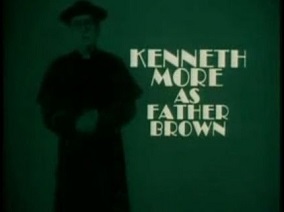
Father Brown is a British television series, which originally aired on ITV in 1974. It featured Kenneth More as Father Brown, a Roman Catholic priest who solved crime mysteries. The episodes were closely based on the stories by G. K. Chesterton.
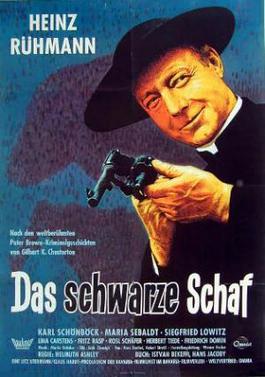
The Black Sheep is a 1960 German krimi mystery film directed by Helmut Ashley and starring Heinz Rühmann, Karl Schönböck and Maria Sebaldt. It is loosely based on the Father Brown stories by G. K. Chesterton. Father Brown manages to demonstrate the innocence of a man accused of murder by finding the real culprit. Rühmann reprised the role in He Can't Stop Doing It in 1962.

Father Brown is a British period detective television series loosely based on the Father Brown short stories by G. K. Chesterton, starring Mark Williams as the crime-solving Roman Catholic priest. Broadcast began on BBC One on 14 January 2013. In April 2023 the BBC confirmed that filming had begun on an 11th series, for broadcast in early 2024, and also confirmed the return of Lorna Watson as Sister Boniface.

The Incredulity of Father Brown is a collection of eight stories by G. K. Chesterton, the third-published collection featuring the fictional detective Father Brown. It was first published as a book in 1926 by Cassell of London, whose monthly Cassell's Magazine featured the last of the eight stories in its April number, illustrated by Stanley Lloyd.

There's That Woman Again is a 1938 American comedy mystery film directed by Alexander Hall. It is the sequel to There's Always a Woman, released the same year. In both films, Melvyn Douglas stars as a private investigator whose wife involves herself in his work. Joan Blondell played the wife in the first film, but that role went to Virginia Bruce in this one.

Dhindora is a 2021 Indian comedy drama web series created by Bhuvan Bam and directed by Himank Gaur. Bhuvan Bam plays ten multiple characters, and the series also stars Gayatri Bhardwaj and Jeeveshu Ahluwalia. Bam claimed that by July 2022, the show had more than 500 million views. The soundtrack is composed by Bhuvan Bam and Sneha Khanwalkar.

















